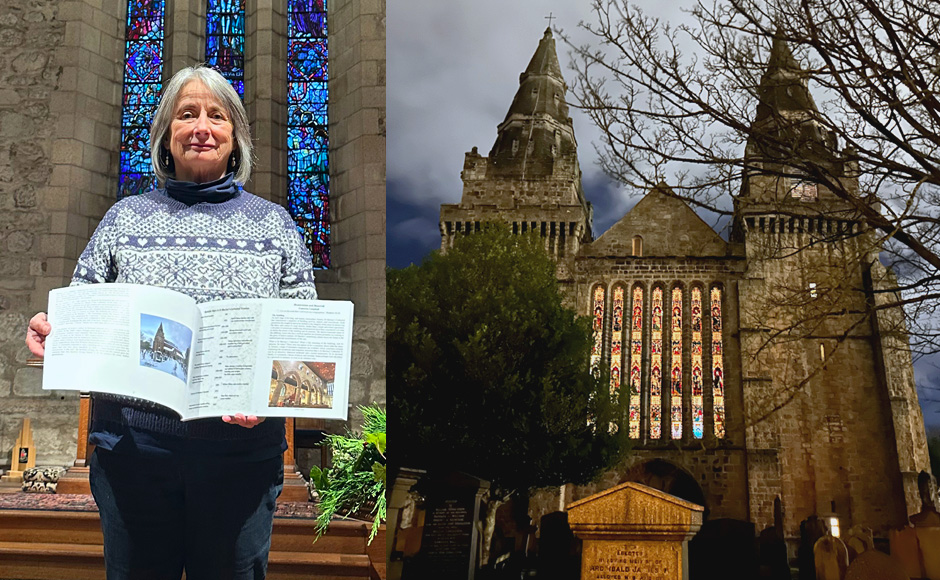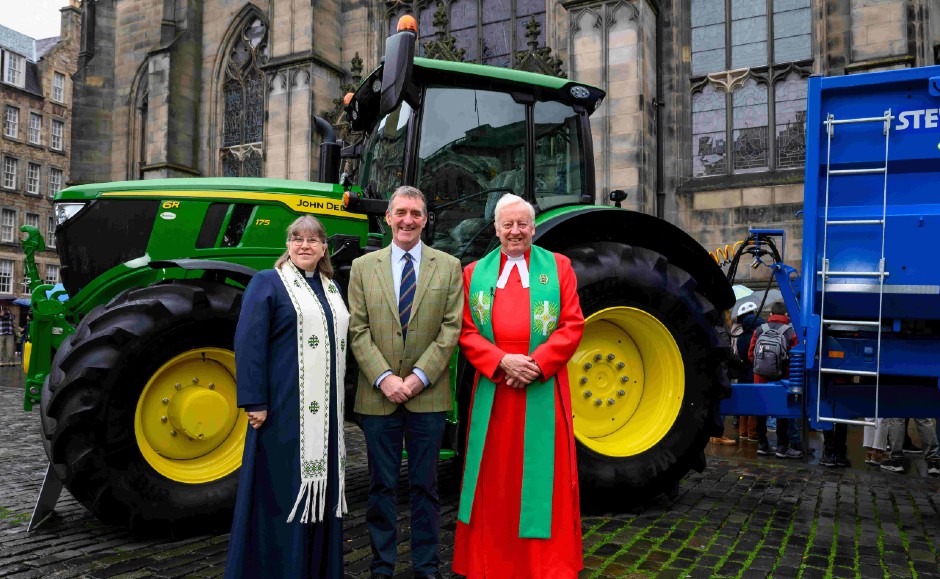New ecumenical walking route celebrates some of Edinburgh’s most historic churches
Published on 25 July 2025 5 minutes read
A walking trail celebrating some of Edinburgh's best-loved and most historic churches has been launched on by representatives from Scotland's three largest Christian denominations, including the Church of Scotland.
Ten of the city's architectural jewels and spiritual havens feature in the Edinburgh City Centre Historic Churches Walking Trail, which leads from the Royal Mile to the New Town and the West End.

The trail takes in all three city cathedrals, including: St Giles' Cathedral on the Royal Mile, where Queen Elizabeth II laid at rest; St Mary's Catholic Cathedral on York Place, visited by Pope John Paul II in 1982; and St Mary's Episcopal Cathedral near Haymarket, the city's highest building.
Smaller churches highlighted include: Canongate Kirk, the parish church to the royal Palace of Holyroodhouse; St Patrick's Roman Catholic Church, which is modelled on Trafalgar Square's St Martin-in-the-Fields; and Old St Paul's, which hosts Alison Watt's iconic painting Still.
The trail is an ecumenical venture involving the Church of Scotland, the Diocese of Edinburgh in the Scottish Episcopal Church, and the Roman Catholic Archdiocese of St Andrews and Edinburgh. It was designed by Anne Martin, a congregant from the Episcopal Diocese.
Rev Dr Scott Rennie, minister of St Giles' Cathedral, Edinburgh, said: "Edinburgh has some of Scotland's most uplifting places of worship, and I hope the trail encourages people from far and wide to discover some of them. It is wonderful for our three church communities to be working together."
Anne Martin, who edited the trail leaflet and is a congregant in the Episcopal Diocese of Edinburgh, said: "Setting up the Walking Trail has given an ecumenical opportunity for three Edinburgh church communities to work together to welcome visitors, and I hope it will lead to many more."
Very Rev John Conway, provost of St Mary's Episcopal Cathedral, Edinburgh, said: "This lovely initiative provides a route to walk between the landmark churches of our beautiful city. Our hope is that the Trail not only shows people how to make their way from one church to another, but also helps reveal the long-shared history and deepening friendship between us all as church communities."
Monsignor Jeremy Milne, administrator of St Mary's Catholic Cathedral, Edinburgh, said: "The ecumenical Walking Trail takes you through the heart of the city and is a brilliant exploration of Edinburgh's rich Christian heritage and living communities. It is a well-chosen sample of Christian history, culture and worship which offers rich reward to those who set out along its path."
Rev Fiona Reynolds, advisor for Christian life at the Episcopal Diocese of Edinburgh, said: "The history of the city and its churches are intertwined, and so it is fitting that our three denominations are part of this venture. It has been great seeing this Walking Trail develop from a spark of an idea to publication and launch."
Access the trail online via the Diocese of Edinburgh's website. Leaflets will be available at the featured churches.
List of all 10 churches on the Walking Trail
- St Giles' Cathedral (Church of Scotland)
Founded in 1124. John Knox's parish church; has played an important role in Scottish history. Arrival of Bonnie Prince Charlie announced here in 1745. Used today for civic services. Organ built in 1992 by the Austrian firm of Rieger Orgelbau. Open Monday to Friday, 10.00–18.00, Saturday 09.00–17.00, Sunday 13.00–17.00 - Greyfriars Kirk (Church of Scotland)
Completed in 1620; first church built in Scotland after The Reformation; second church was built in 1722, joined together in 1929. The National Covenant was signed here in 1638. Peter Collins organ built in 1990. Open April to September, Monday to Friday, 10.30–16.30, Saturday 11.00–14.00 - St Patrick's Church (Roman Catholic)
Originally an Episcopalian Chapel opened in 1774, known as the ‘English Chapel', inspired by London's St Martin-in-the-Fields. Apse paintings by Alexander Runciman. After a short ownership by the Presbyterian Relief Church, purchased for the growing Irish Catholic Community in 1856. Open Monday to Saturday 08.00–19.00, Sunday 08.00–18.00 - Canongate Kirk (Church of Scotland)
James VII/II ordered the construction of Canongate to replace Holyrood Abbey. It was completed in 1690 and James VII/II's coat of arms were altered to be those of William of Orange. The 1989 organ is the 1000th instrument built by the Danish firm Frobenius & Sons. Open most weekends; please check website - Old St Paul's (Scottish Episcopal Church)
On the site of the oldest episcopal church in Scotland. Present church 1883, designed by pupil of George Gilbert Scott. Willis Organ 1888; renovated 1960. Open Monday to Friday, 08.00–17.00, Saturday 09.00–17.00, Sunday 09.30–19.30 - St Mary's Catholic Cathedral, York Place (Roman Catholic)
Opened as the RC Chapel of St Mary in 1814; pro-cathedral for the new RC Archdiocese of St Andrews and Edinburgh from 1878. Enlarged in 1896; roof raised in 1932. Matthew Copley organ built in 2007 using pipes from 1882 Wilkinson organ. Café. Open Monday to Friday, 08.30–18.30, Saturday 08.30–19.30, Sunday 08.30–20.30 - The New Town Church (Church of Scotland)
First church built in Edinburgh's New Town in 1784. The tower was added in 1787 making it then the tallest building in the city. Wells Kennedy organ installed in 1984. Café. Open Monday to Friday, 10.30–14.00, Saturday 11.00–13.00 - St John's Church (Scottish Episcopal Church)
Neo-gothic church consecrated 1818; architect William Burn. Built by congregation founded in 1792. Plaster ceiling based on Henry VII Chapel in Westminster Abbey. Willis organ built in 1900. Café. Open Monday to Saturday (excluding Wednesday) 10.00–16.00, Wednesday 12.00–16.00 - Parish Church of St Cuthbert (Church of Scotland)
Ancient site. A new church opened in 1775 with a steeple added 1789. A second new church completed in 1894 retaining previous tower and steeple. Interior includes Tiffany stained glass. Ring of 10 bells. Robert Hope-Jones organ built 1899. Open Tuesday to Friday 10.30–15.00 - St Mary's Episcopal Cathedral, Palmerston Place (Scottish Episcopal Church)
Consecrated in 1879; spire added 1913–1917. Architect George Gilbert Scott. Willis organ built 1879. Song School built in 1885; murals by Phoebe Anna Traquair (open by appointment). Open Monday to Friday, 08.00–18.00, Saturday to Sunday, 08.00–17.00


